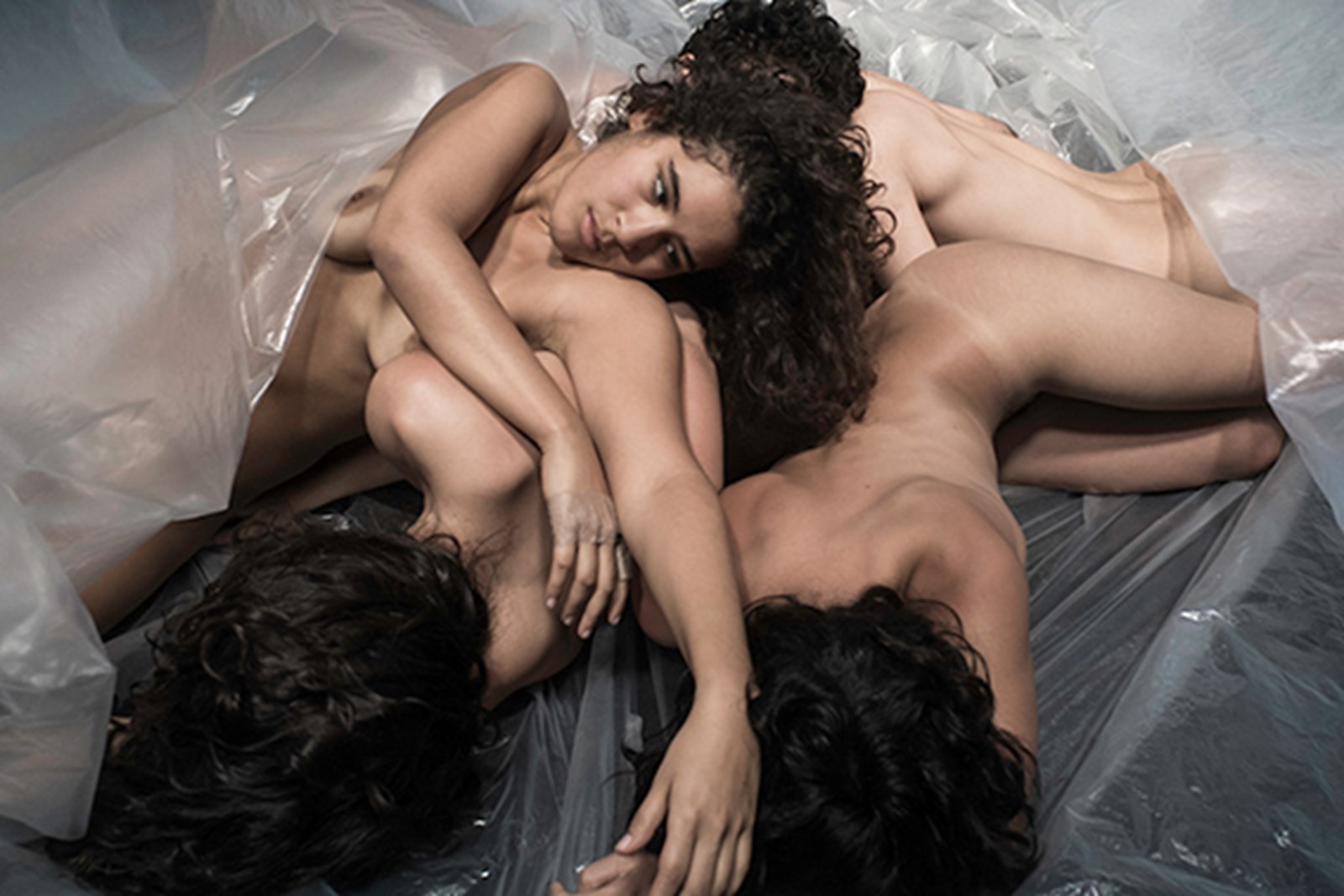When you’re asked to take your shoes off before walking down a dark corridor and entering an empty stage, you know you’re about to experience something quite different. Pindorama is a confronting contemporary dance piece that asks the audience to feel comfortable with nudity, interact with the performance space and look down upon the vulnerability of the dancers. Directed and choreographed by Brazilian dancer Lia Rodrigues, Pindorama opened in the Studio Underground at the State Theatre Centre Wednesday, March 3. A third part to her triptych following Pororoca (2010) and Piracema (2011) and performed over 250 times in many parts of the world, the Perth International Arts Festival is to thank for bringing the rich work of Rodrigues to Australia for the first time.
The show begins with little warning as dancers move between the audience, nudging them politely aside and laying a large clear tarp in the centre of the studio. This space becomes their stage as they nonchalantly place condoms filled with water across the tarp. Silence falls over the audience as a naked woman walks onto the tarp, pours a large bottle of water over her exposed body and sinks to the floor. The lights are lowered even further and the mood is set; silent and somewhat sinister, we are left to imagine, criticise and mould our own story.
It is evident Rodrigues has taken a bare minimal approach, with no music, no clothes and barely any light. The dancers use the raw materials around them to create sounds; the crunching of water bottles, heavy breathing and loud screams, the air passing between the tarp and the faint burst of water every time a condom is crushed beneath their weight. Anticipation is created as more naked bodies join in, sprawling across the tarp and grabbing each other everywhere and anywhere. At one point, the dancers lay completely still as they were rolled up into the tarp, giving the impression they may be dead bodies washed up from the sea. However, the excitement is quick to subside as they always resort back to crawling in silence.

I was fortunate enough to hear Rodrigues talk about her work after the performance on opening night. She discussed the meaning behind the title Pindorama, the first name given to Brazil by the Portuguese colonisers which in their Tupi language translates to ‘Land of the Palms’. Rodrigues described it as a statement for the lost cultures and a point of inspiration for exploring the landscape around her. She spoke about the Favela, one of the many slums in Brazil where her studio and dancers are located. A place where there is no money and therefore no technology, everything is taken away except for the body, its movement and the space at hand.
I began to link Rodrigues’s explanation to the piece, replaying moments of the performance as she spoke. The dancers could be seen as illegal immigrants to look down upon and the plastic a representation of human trafficking and poverty, something which she saw as beautifully cruel. Her strong connection to space and landscapes are the basis to her work as she explains “I believe that in my country the artistic act cannot be restricted to the creation of an artwork; one must at the same time occupy a space, create a territory and provoke the conditions to survive in it. To build a terrain so that the work of art may exist.”
For me, this piece was too minimalistic. There was too much crawling and breathing and not enough dancing; a lot of drawn out silence that called for audience members to shuffle uncomfortably and there was so little light that the performance was at times impossible to see. Standing for 90 minutes – done intentionally to “make the audience look down on the dancers” – fuelled frustration and discomfort more than anything else. It became evident I wasn’t the only one who felt this way, as several audience members walked out halfway through the performance, whispering that they were bored.
If you don’t like contemporary at its wildest, you probably won’t enjoy Pindorama. I’ll admit I didn’t really like it until I heard Rodrigues explain its delicate meaning and intricate themes of sacrifice and landscape. The show is one of the strangest dance pieces I have ever seen, but one I haven’t stopped talking about since. It’s intriguing, uncomfortable and certainly different from traditional notions of dance. For the everyday viewer, this piece would be very difficult to enjoy due to its left-of-field approach and very open narrative. However, experiencing new forms of art have a way of stimulating us and in this sense, Rodrigues has accomplished what she set out to do.
Review by Melissa Scott
Images by Sammi Landweer
Pindorama ran at Studio Underground at the State Theatre Centre as part of the Perth International Arts Festival.

